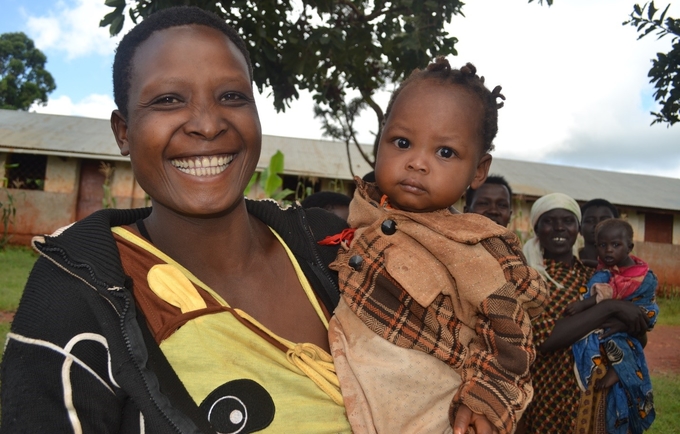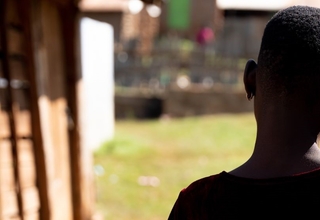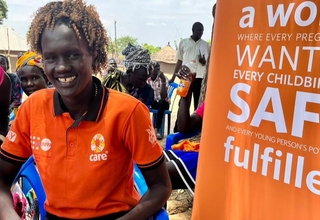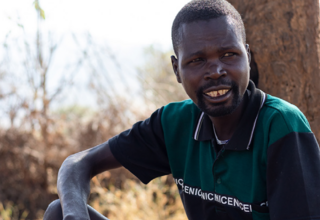“Genital Mutilation is the most unbearable pain; far worse than childbirth! A pain that I will never forget for the rest of my life,” says 39 year-old Chemutai Clementina. It had taken her 20 years to finally accept the knife. For all those years, her marriage had not been rosy because she had shunned the practice of Female Genital Mutilation, as a rite to passage to womanhood.
“I had a loving husband and he loved me. But because I was uncut, the community shunned and disrespected me. I was never fully accepted by my peers who kept on referring me as a girl.”
“My husband faced similar insults from his friends who always ridiculed him for having a girl for a wife. He could barely hold his head high among fellow men,” she narrates. With the mounting pressure, family members urged her husband to marry another woman who would stand with him during the circumcision ceremony of their son. Traditionally, non-cut women are not allowed to attend community activities.

UNFPA Programme Assistant
Jimmy Dombo. PHOTO: UNFPA/
Richard Akena.
“Finally this pressure got to me; I couldn’t take it anymore I was forced to get cut so that I would be able to stand with my son at his initiation.”
“I faced humiliation to gain acceptance. I am now a woman fully accepted in my community but I will never allow my little girl Cherop to go through the same humiliation and pain,” Chemutai says.
Social acceptance as a driver of FGM
Chemutai’s story is an illustration of the changing dynamics of FGM practice. Traditionally, the practice that involves the cutting or removal of external female genitalia, targeted girls as an initiation to womanhood. However, stigma and peer pressure are increasingly becoming drivers of the harmful cultural practice, with older and already-married women like Chemutai forced into cutting for social acceptance and respect in communities where FGM remains deeply rooted in culture and identity. A study by the Reproductive, Educative and Community Health Programme (REACH) has shown that traditionalists in Uganda have now shifted to circumcising married women with the consent of their families, causing the prevalence of FGM to rise drastically in older women.
REACH interviewed more than 200 youths in the Sebei sub-region of eastern Uganda. The results revealed that while only 24% of girls aged 10 to 14 have experienced some form of genital mutilation, 76% of women between 25 and 35 have undergone the procedure in the region. Other reports show that Traditional Birth Attendants are also cutting expectant mothers during delivery.
Adopting to programmatic response

for 40 years until she gave up the practice in 2004 after sensitisation.
PHOTO: UNFPA/Jimmy Dombo
For the last decade, the UNFPA-UNICEF Joint Programme on Female Genital Mutilation/Cutting is spearheading FGM abandonment in practicing communities through the social norms change approach. As a result, reports show, hundreds of communities have abandoned the practice; with schools becoming a safe haven for girls escaping FGM and child marriage and FGM surgeons (cutters) laying down their tools.
A case in mind is eighty -two year –old Kokop Chemwetich who worked as a surgeon for 40 years until she gave up the practice in 2004 following sensitization by the Joint programme programme. Initially, she says, at the peak of her practice, she circumcised over 100 girls in a day. Today she has given up the practice and is now a Traditional Birth Attendant (TBA) in Kaplwani Village, Kwosir Subcounty in Kween District. She admits to have in the past, cut pregnant women who had turned to her for delivery services, but today she says no to them.
“I have had instances of pregnant women asking to be cut and I have always told them that I no longer do that and that it is against the law,” she says.
“The Communities have not fully appreciated the dangers in FGM. But, one of the ways to curb FGM is for the former cutters be supported with alternative income generating sources of livelihood so they will not fall back to their old trade,” says Chemwetich.
The anti-FGM law passed in 2010 criminalizing FGM in Uganda has also aided to bring the number of incidents down. However, some communities that continue to perform the rite secretly in hotspots, during delivery with TBAs and across borders to Kenya. Early this year, authorities arrested 19 people over allegations of aiding women and girls to undergo FGM in various sub-counties in Kween district. However, with the changing face of FGM practice, key interventions to adopting to programmatic response should focus on sensitizing expectant mothers to deliver at health centres rather than with TBAs, targeted interventions to the community level and shifting focus and awareness campaigns to use of community structures like Village Health Teams. A recently concluded regional Inter –Ministerial meeting to end cross border FGM in Kenya, Uganda, Tanzania, Ethiopia and Somalia also aimed to strengthen inter-country collaboration on FGM in border areas and chart a way forward to respond to cross-border FGM.
Written by Jimmy Dombo




